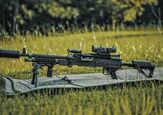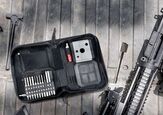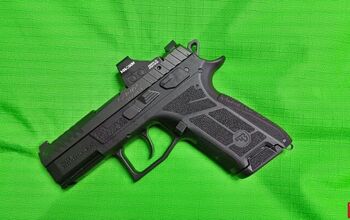The PKM vs M240 Debate

It is common to compare machine guns, particularly the PKM and the M240/MAG-58. This overview will provide a brief comparison. While the PKM shows strong performance on paper and during range evaluations, making it an excellent option for direct assault scenarios, the M240 may be more effective when tactics and doctrine are considered.
The Russian military's design and operational strategy have historically focused on offensive maneuvers, which is reflected in its force structure. This tradition stems from historical experiences, particularly during World War II, when the Red Army's ability to conduct large-scale offensives was crucial in defeating Germany. The lessons learned from this period have significantly shaped contemporary Russian military doctrine, emphasizing rapid movement and decisive strikes against enemy forces.
How the Russians Fight
The Russian Army has developed a force structure prioritizing mobility and firepower to support its offensively oriented doctrine. Combined arms formations integrate infantry, armor, artillery, and support units into cohesive units capable of executing rapid offensive operations. This organization emphasizes maneuver warfare, where speed and surprise are essential, and allows for concentrated firepower at critical points. Although Russia initially aimed for a swift victory based on its offensive capabilities, it faced unexpected resistance and logistical challenges that hindered its ability to sustain prolonged engagements. The Russian Army's structure is designed for such actions, and it does not include light infantry; all its units are either armored or mechanized. Russian commanders often initiate attacks even when in a defensive position, as demonstrated in Ukraine. In theory, Russian warfare strongly emphasizes speed, momentum, and a high level of aggression.
Structure
The rapid development of the offensive attack strategy has significantly influenced the current structure of the Russian infantry. As a result, there is a notable absence of dedicated platoon-level weapon squads, which typically include machine guns and anti-tank teams. Instead, the Russian army has implemented a system in which individual soldiers are equipped with support weapons within their line units, eliminating the need for crew-served gun teams. This fast-paced approach has also reduced the necessity for tripods and, in many cases, spare barrels. This shift has been evident in training exercises and combat situations, most recently observed in Ukraine.
This structure creates a trade-off. Rather than relying on a crew-served machine gun weapon squad, the Russian army recently began issuing up to two PKMs per infantry squad, replacing the RPK-74. By saturating the line unit with PKMs, they gain a numerical firepower advantage, not to mention firepower and an overmatch of most Western 5.56-based squad automatic weapons. The Russian and Western methods have advantages and disadvantages, but the Western approach has generally resulted in fewer casualties than the Russian tactics.
For the U.S. military, the strategy involves creating a base of fire to gain fire superiority, only then maneuvering under that cover. In contrast, the Russian approach emphasizes firing and maneuvering simultaneously.
In "The Russian Way of War," the PKM is further illustrated as the squad's automatic weapon. It is typically positioned near the squad leader and is responsible for supporting the fire group while assisting the maneuver group. I recall this clearly; my gunner, designated as M249, was the closest person to me during my time as a team leader. This proximity allowed better control of our fire team's most casualty-producing weapon.
The Gun
The West emphasizes fire superiority, which must be established before engaging in maneuvers, serving as a support weapon for infantry. The PKM machine gun, while distributed as an individual weapon, actually serves as the squad automatic weapon within the infantry squad.
Infantry tactics primarily concentrate on offensive operations. The PKM machine gun is usually not mounted on a tripod, which limits its effectiveness as the squad's automatic weapon for targeting specific points. This limitation reduces both its accuracy and effective range.
When comparing effective ranges, the statistics for M240 closely align with those of the PKM. Specifically, the effective ranges for M240 are as follows: 600 meters for point targets when using a bipod, 800 meters for area targets on a tripod, and 1,100 meters for point targets on a tripod, with suppression achieved at 1,800 meters.
However, the lightweight design of the PKM enhances infantry units' mobility. The Russian military demonstrates some understanding of machine gun theory, as reflected in its training literature, but it often fails to implement it. Employing proper Western machine gun theory and techniques to maximize the machine gun's effectiveness can give any infantry unit a significant advantage.
Barrels
The PKM does not prioritize the need for rapidly changing barrels; the key factor is that the barrels must be removable, and speed is not critical. Also, the PK's barrel change method better suits a conscript army, verifying the weapon is clear in contrast to the M240, designed for a professional army, and allows quick barrel changes to keep up the fire.
One noteworthy aspect of the PKM is its capacity to adjust headspace, which can help extend the barrel's service life and accommodate wear over time. The estimated barrel life for the PKM ranges from 15,000 to 20,000 rounds. The original PKM receiver is designed to endure approximately 200,000 rounds, while the PK model, featuring a thicker receiver, can potentially exceed that threshold.
Conclusion
On the surface, the PKM machine gun may seem to have a definitive advantage. However, the M240/MAG-58 demonstrates notable strengths in effective machine gun deployment when considering tactics and doctrine. Properly utilizing this weapon system can enhance a unit's lethality and overall capability to achieve objectives.

Lynndon Schooler is an open-source weapons intelligence professional with a background as an infantryman in the US Army. His experience includes working as a gunsmith and production manager in firearm manufacturing, as well as serving as an armorer, consultant, and instructor in nonstandard weapons. His articles have been published in Small Arms Review and the Small Arms Defence Journal. https://www.instagram.com/lynndons
More by Lynndon Schooler














![[SHOT 2025] DSA x H&R Collab On T-48 FAL Clone](https://cdn-fastly.thefirearmblog.com/media/2025/01/21/23291/shot-2025-dsa-x-h-r-collab-on-t-48-fal-clone.jpg?size=350x220)
![[SHOT 2025] Steyr Monobloc: The Barrel And Receiver Are One Piece!](https://cdn-fastly.thefirearmblog.com/media/2025/01/24/14161/post.jpg?size=350x220)





![[SHOT 2025] Radical Defense: Silencers For Cheytac And More](https://cdn-fastly.thefirearmblog.com/media/2025/01/28/22531/shot-2025-radical-firearms-silencers-for-cheytac-and-more.jpg?size=350x220)





Comments
Join the conversation
If i have to carry pkm, mounted 240
"Combined arms formations integrate infantry, armor, artillery, and support units into cohesive units capable of executing rapid offensive operations."
If this had been written pre-2022 then I would have understood this line. As it currently stands, though, probably the least fitting word to use when describing Russia's force structure is "cohesive".